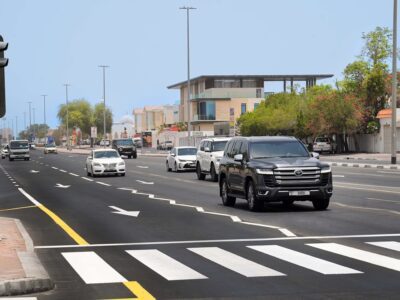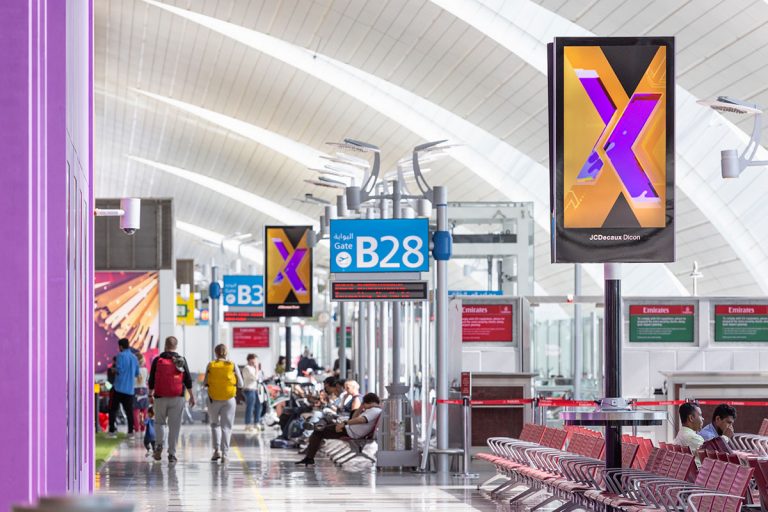Dubai Airport can reclaim its position in the top 10 rankings for total passenger numbers, but only if they start “reinventing the future” of the airport together with other stakeholders. And that doesn’t just apply to Dubai, but to the entire aviation industry, according to Linus Bauer, founder and managing director of Bauer Aviation Advisory.
While Dubai retained its spot as the number one airport in the world in terms of international passengers last year, according to the latest report from Airports Council International (ACI) World, DXB fell out of the top 10 rankings for total passenger numbers. In 2019, the airport was positioned fourth. But the airport felt the full force of movement restrictions and border closures imposed as a result of the global Covid-19 pandemic.
Bauer told Arabian Business: “Due to the lack of a large domestic market and the slower recovery process of long-haul flights in general, the recovery of the global hubs in the GCC like Dubai will take longer as anticipated. The large dependency on international traffic and connectivity between key markets has an impact on the speed of the recovery of GCC hubs.”
Dubai kept its place at the top of the international passenger table, despite witnessing a 70.1 percent drop in numbers for 2020, from 86,328,896 in 2019 to 25,831,363 last year – that included 17.8 million passengers during the first quarter of the year, before the pandemic started to impact travel.
While most governments kept borders shut for big chunks of last year, Dubai – which relies on international tourism for nearly a third of its gross domestic product – reopened in July. Average customer traffic peaked at 1.3 million in the third and fourth quarters.
 Linus Bauer, founder and managing director of Bauer Aviation Advisory
Linus Bauer, founder and managing director of Bauer Aviation Advisory
Bauer said the recent suspension of flights between the UAE and India and the UK Government’s potential decision to keep the UAE on its ‘red list’ will deal further blows to Dubai Airport.
“Markets like the UK and India are two of the largest and most important markets for Dubai Airport,” he said.
John Grant, partner at Midas Aviation, told Arabian Business the latest figures, while not necessarily surprising, were “dramatic and serious” for everyone connected with the travel system.
He said: “I think we now need to realise that any bounce back will be much softer than originally hoped for, further Covid-19 outbreaks are likely, authorities are extremely reluctant to allow restriction free international travel and (global) vaccine rates are slower than hoped.”
 John Grant, partner at Midas Aviation
John Grant, partner at Midas Aviation
In terms of international freight, Dubai dropped from fourth place in 2019 (2,514,918 metric tonnes) to eighth place (1,932,022 metric tonnes last year).
Guangzhou Bai Yun International Airport in China recorded the most passenger traffic in 2020 (43,767,558), with Atlanta Hartsfield-Jackson International Airport in the United States just behind (42,918,685).
Seven of the top 10 airports for passenger traffic are in China, with three in the United States.
“The impact of Covid-19 on global passenger traffic pandemic brought aviation to a virtual standstill in 2020 and we continue to face an existential threat,” ACI World director general Luis Felipe de Oliveira said.
 ACI World director general Luis Felipe de Oliveira
ACI World director general Luis Felipe de Oliveira
ACI World estimates that there were 58 million global aircraft movements in 2020, representing a drop of 43 percent from 2019.
Saj Ahmad, chief analyst at StratAero Research, cautioned that all traffic figures for 2020 should be seen in the context of the Covid-19 impact.
He said: “The next few years, such numbers will be meaningless as vaccines battle differing mutations of the virus and the inevitable impacts of lockdowns, re-openings and changing travel bubbles between nations. It’s all an aberration which will likely take the best part of five to 10 years before we see a true re-opening of air routes in the way we were accustomed to back in 2019.”
 Saj Ahmad, chief analyst at StratAero Research
Saj Ahmad, chief analyst at StratAero Research
The UAE has implemented one of the most efficient Covid-19 vaccination programmes in the world, with well over 10 million doses administered to date.
Bauer said this would bode well in the recovery process of the aviation industry. He said: “The high vaccination rates in the UAE and Dubai’s role model for restarting tourism and restoring business during the pandemic would benefit Dubai Airport and Emirates by luring more tourists and business travellers to Dubai in the short- and medium-term.”
However, he added: “Regardless what will happen across the world, the aviation industry including airports like Dubai Airport will return to its long-term growth trajectory – only if they start reinventing the future of the airport together with other stakeholders.”






